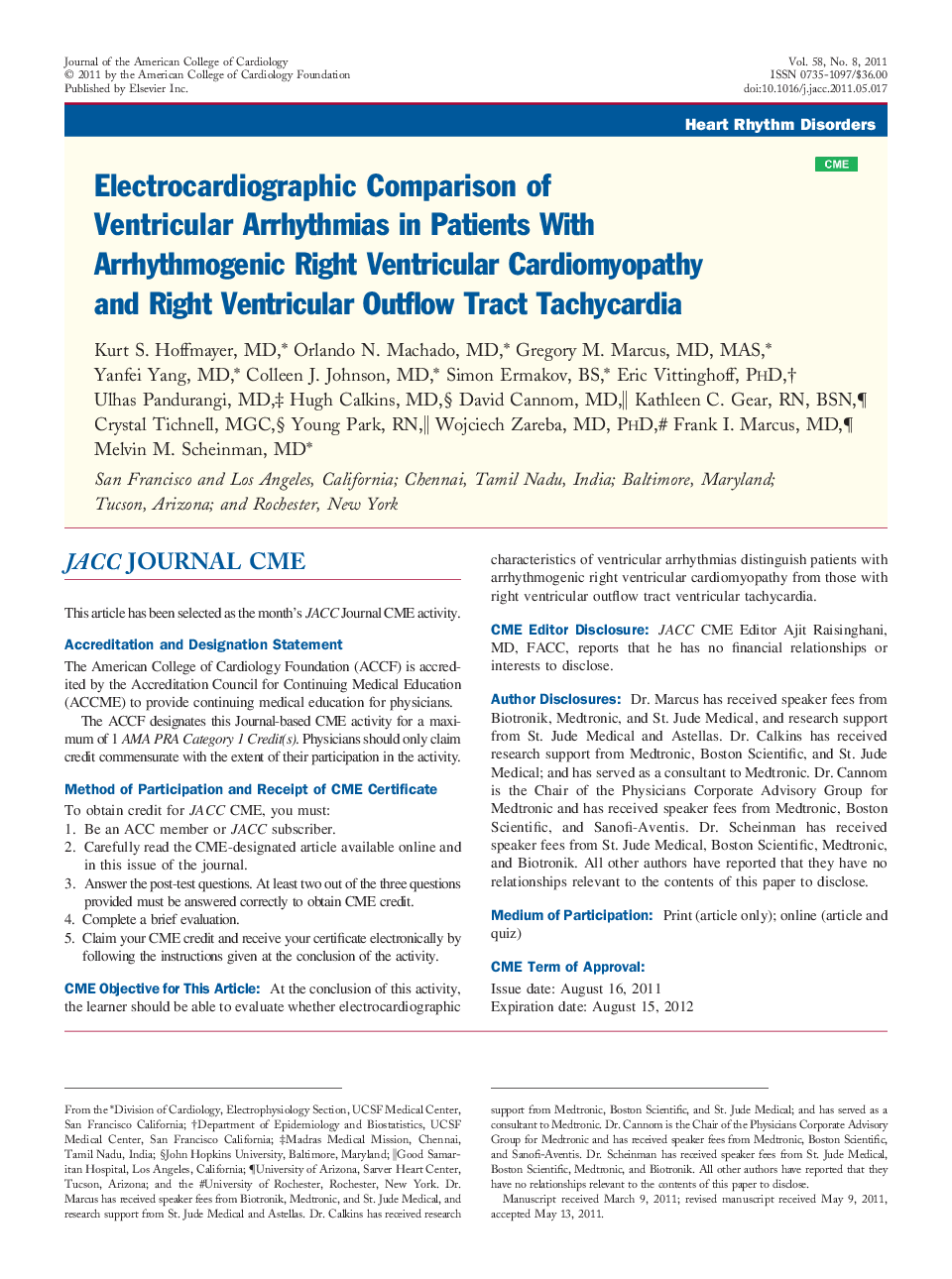| کد مقاله | کد نشریه | سال انتشار | مقاله انگلیسی | نسخه تمام متن |
|---|---|---|---|---|
| 2949674 | 1577251 | 2011 | 8 صفحه PDF | دانلود رایگان |

ObjectivesThe purpose of this study was to evaluate whether electrocardiographic characteristics of ventricular arrhythmias distinguish patients with arrhythmogenic right ventricular dysplasia/cardiomyopathy (ARVD/C) from those with right ventricular outflow tract tachycardia (RVOT-VT).BackgroundVentricular arrhythmias in RVOT-VT and ARVD/C-VT patients can share a left bundle branch block/inferior axis morphology.MethodsWe compared the electrocardiographic morphology of ventricular tachycardia or premature ventricular contractions with left bundle branch block/inferior axis pattern in 16 ARVD/C patients with that in 42 RVOT-VT patients.ResultsARVD/C patients had a significantly longer mean QRS duration in lead I (150 ± 31 ms vs. 123 ± 34 ms, p = 0.006), more often exhibited a precordial transition in lead V6 (3 of 17 [18%] vs. 0 of 42 [0%] with RVOT-VT, p = 0.005), and more often had at least 1 lead with notching (11 of 17 [65%] vs. 9 of 42 [21%], p = 0.001). The most sensitive characteristics for the detection of ARVD/C were a QRS duration in lead I of ≥120 ms (88% sensitivity, 91% negative predictive value). QRS transition at V6 was most specific at 100% (100% positive predictive value, 77% negative predictive value). The presence of notching on any QRS complex had 79% sensitivity and 65% specificity of (55% positive predictive value, 85% negative predictive value). In multivariate analysis, QRS duration in lead I of ≥120 ms (odds ratio [OR]: 20.4, p = 0.034), earliest onset QRS in lead V1 (OR: 17.0, p = 0.022), QRS notching (OR: 7.7, p = 0.018), and a transition of V5 or later (OR: 7.0, p = 0.030) each predicted the presence of ARVD/C.ConclusionsSeveral electrocardiographic criteria can help distinguish right ventricular outflow tract arrhythmias originating from ARVD/C compared with RVOT-VT patients.
Journal: Journal of the American College of Cardiology - Volume 58, Issue 8, 16 August 2011, Pages 831–838